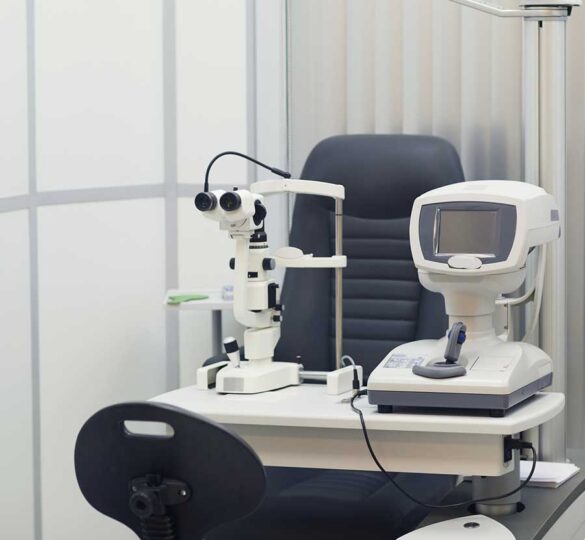Why Do I Need a Visual Field Test?
The visual field test is a subjective measure of central and peripheral vision, or “side vision,” and is used by your doctor to diagnose, determine the severity of, and monitor your glaucoma.

Another year has passed and it is time for your visual field test, a.k.a. “the clicky test” that frazzles many glaucoma patients and can feel like a waste of time.
The staff at your eye doctor’s office reassures you that it is a necessary part of your exam and you cooperate to the best of your ability. But why do you need to take this test?
The visual field test is a subjective measure of central and peripheral vision, or “side vision,” and is used by your doctor to diagnose, determine the severity of, and monitor your glaucoma. The most common visual field test uses a light spot that is repeatedly presented in different areas of your peripheral vision. Less common testing may be performed by a technician manually moving a target to map areas of damage.
Diagnosis and Staging
A visual field test is performed at the initial visit or as soon as glaucoma is suspected. It evaluates vision loss due to glaucoma, damage to the visual pathways of the brain, and other optic nerve diseases. When glaucoma is diagnosed the visual field data is used to determine the severity of disease. This staging information is useful in choosing a target intraocular pressure and determining follow-up.
Following for Progression
After the initial diagnosis the doctor will repeat the visual field test to check for worsening disease. This may be done in three to twelve months depending on the severity. If there are worsening defects or new areas of damage, a lower intraocular pressure and change in therapy may be needed. Many studies have shown that visual fields are variable over time and there is a learning curve when taking the test, so your doctor may ask you to repeat the test to confirm your results.
Isn’t There Something Easier?
Imaging of the optic nerve and surrounding tissues is an objective test that can also detect glaucoma damage and progression. This information can help your doctor make treatment decisions, and as the technology improves it will be even more useful. However, at this time it has not replaced the visual field test. We still need both types of testing because there are times that the optic nerve changes before the visual field, but also times when changes to the visual field are observed before damage to the optic nerve is detected.
So for now, get comfortable, relax, and only press that button when you are sure you see the light spot. Don’t try to “ace” the test by looking around or pressing the button indiscriminately. Your results will be most consistent and most useful for the doctor if you follow the directions carefully. We promise to keep looking for a test that is easier on our patients, but for now you are stuck with “the clicky test.”
Article by Anna C. Momont, MD. Last reviewed April 5, 2022.

Anna C. Momont, MD
Anna C. Momont, MD is a glaucoma specialist at the UW School of Medicine and Public Health, University of Wisconsin-Madison. She received her medical degree from the University of Wisconsin and completed an ophthalmology residency and glaucoma fellowship at the University of Michigan Kellogg Eye Center.